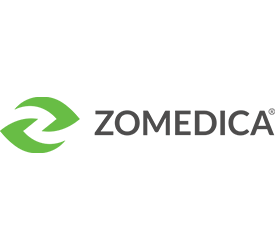Diagnostic Testing and Monitoring
All diagnostic tests for Cushing’s syndrome have limitations and can yield false-positive results when performed in patients with concurrent nonadrenal illness or stress.28 Therefore, proper patient selection is essential before testing and likely impacts diagnostic accuracy more than which specific test is selected. Practitioners should only test patients when clinical suspicion of CS is high (i.e., the presence of two or more clinical or biochemical abnormalities suggesting CS). Additionally, attempts should be made to stabilize or resolve any known comorbidities (such as diabetes mellitus) before pursuing CS testing when possible.29
The low-dose dexamethasone suppression test (LDDST) is the preferred diagnostic test of the guidelines panel members. False positives can occur with stress or nonadrenal illness such as uncontrolled diabetes.30,31 Results of the LDDST may also differentiate between PDH and ADH.
Low-Dose Dexamethasone Suppression Test Technique
- Draw a serum sample for baseline cortisol measurement.
- Administer 0.01 mg/kg of dexamethasone IV (if dexamethasone sodium phosphate is used, calculate dose using a concentration of 3 mg/mL, instead of 4 mg/mL as listed on the bottle).32
- Collect serum samples for cortisol measurement at 4 and 8 hr.
Test results are interpreted as follows:
- Refer to laboratory’s diagnostic cutoffs for interpretation. The values below are used as examples only.
- Assess the 8 hr result. Cortisol >1.4 mcg/dL is consistent with a diagnosis of CS; continue with differentiation.
- If the 8 hr cortisol concentration is between 1.0 and 1.39 mcg/dL but clinical suspicion for CS is high, consider performing an ACTH stimulation test (ACTHST) or repeating the LDDST in 2–3 mo.
- If the 8 hr result was consistent with a diagnosis of CS, then assess for evidence of partial suppression; if any criteria are present, the result is consistent with PDH.
- 4 hr cortisol concentration is <1.4 mcg/dL.
- 4 or 8 hr cortisol concentration is <50% of the baseline concentration.
- Up to 35% of dogs with PDH do not fulfill at least one of these criteria; therefore, failure to observe suppression does NOT confirm ADH. If differentiation is still desired, abdominal ultrasound and/or an endogenous ACTH concentration can be pursued.
- Relevant considerations:
- Samples should be collected in a manner consistent with laboratory recommendations. Fasting is generally not required, but excessive lipemia may affect results. If lipemia is present, seek laboratory guidance for interpretation.
- Glucocorticoid withdrawal before testing should be 2 wk for short-acting glucocorticoids, whereas up to 4 wk may be required following use of longer-acting glucocorticoids (such as triamcinolone). 33–35
The ACTHST appears to be less impacted than the LDDST by stress and nonadrenal illness, particularly diabetes.29,30 The ACTHST should also be considered if the LDDST does not support a diagnosis of hypercortisolism but clinical suspicion remains high, to confirm iatrogenic CS, and to monitor CS therapy. The testing procedure is detailed in the ACTH Stimulation Technique box, with results interpreted as follows:
- Refer to laboratory’s diagnostic cutoffs for interpretation. Values indicated here are used as examples only.
- If the 1 hr post-ACTH cortisol exceeds 22 mcg/dL, this is consistent with CS.
- If the ACTHST returns with both the pre- and stimulated cortisol in ranges that mimic hypoadrenocorticism, this is consistent with iatrogenic CS, and additional investigation into glucocorticoid exposure is warranted. This pattern may also be seen in dogs with ADH; an LDDST should be performed if iatrogenic hypercortisolism is excluded.
Relevant considerations for the ACTHST are as follows:
- False-positive results can occur in dogs that are chronically or moderately stressed or have nonadrenal illness but are less common than with LDDST.30
- This test lacks sensitivity in dogs with adrenal tumors, leading to false-negative results in up to 41% of dogs with ADH.36 If the stimulated cortisol concentration is below the diagnostic cutoff and clinical suspicion of CS remains high, an LDDST should be performed.
- See “Relevant Considerations” for LDDST, above.
The urine cortisol-to-creatinine ratio (UCCR) test is highly sensitive but poorly specific, leading to a large number of false positives, particularly in dogs with polyuric conditions. It is most appropriately used to exclude hypercortisolism in patients with a low clinical suspicion of CS, such as an asymptomatic dog with an alkaline phosphatase (ALP) elevation. To minimize the risk of false-positive results, urine samples are best collected in a nonstressed, home environment.37 A low value (based on the laboratory’s diagnostic cutoff) almost always rules out the disease.








